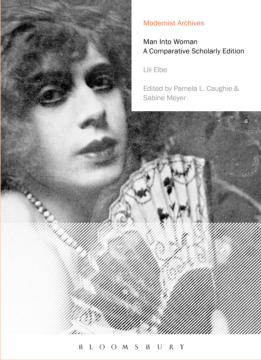History of the Project

The history of this project begins with the separate scholarly pursuits of Sabine Meyer and Pamela L. Caughie.
Sabine, who has become one of the foremost scholars on Lili Elbe’s life, began her work on Lili Elbe with research trips to Vejle, Denmark in Fall 2007 and Dresden in Spring 2008. In Fall 2008 she began to draft a prospectus for a dissertation focusing on the editorial history of Fra Mand til Kvinde as well as the public, medical, and juridical conceptualization of Elbe’s case. In Summer 2009 she received a full PhD scholarship from the Federal State of Berlin as well as a stipend from the University of Copenhagen, where she was a guest researcher in Fall 2009. In Denmark she worked with the archival material and the press coverage at The Royal Library and established a collaboration with the journalist Nikolaj Pors, who had been researching Lili Elbe and Gerda Wegener since 2000 to write their biography and produce a film documentary on the subject. (Pors has generously acted as a consultant on this website.) Later that year Sabine traveled to Sweden for research in the Ernst Harthern archive, then located in Stockholm.These years of research culminated in her dissertation, “Wie Lili zu einem richtigen Mädchen wurde”, at Humboldt University in Berlin. She received her PhD in 2014 and her dissertation was published by transcript in 2015.
Pamela Caughie, a professor of modernist and gender studies at Loyola University Chicago, had been researching this narrative for several years before meeting Sabine in 2015. In 2012 Pamela drafted an article (published the next year) comparing Man into Woman and Virginia Woolf’s Orlando (1928), in which the eponymous protagonist undergoes a change in sex halfway through the narrative, noting how the modernist aesthetics of Woolf’s novel reconceives the narrative of gender shift presented in Lili Elbe’s story. In 2013 and 2014, with several Loyola University Chicago students—Jonathan Reinhardt (MA, English, 2013), a native German; Anthony Betori (BA, English, 2013), who studied in Berlin; and Hannah Gillow Kloster (MA, Digital Humanities, 2014), who is Norwegian and reads Danish—Pamela compared the four primary editions of Elbe’s narrative and began researching its composition history. During this research, Pamela learned of Sabine’s work on this narrative and communicated with her via e-mail over the next few months. In Spring 2014 on a research trip to Copenhagen, Pamela photographed Elbe’s letters in The Royal Library and, with her student Hannah, transcribed and translated those letters. (This archive hosts new translations by Kristin Jacobsen.)
In June 2015, Pamela returned to Copenhagen to meet and enlist the services of Marianne Ølholm (University of Copenhagen), our senior Danish translator and research collaborator on this project. Pamela then traveled to Stockholm to finally meet Sabine and to plan this collaborative project with her. Together they visited the Ernst Harthern archive and secured permission to photograph the archive’s materials. That year Pamela also recruited Nikolaus Wasmoen, a modernist scholar in digital humanities now at the University of Buffalo, to serve as the digital editor on this project.

In August 2016 Sabine and Pamela received a book contract from Bloomsbury for the print edition, and presented their research on this work at the International Comparative Literature Association conference in Vienna. In Chicago, Pamela began production of the digital edition and archive with support from the Center for Textual Studies and Digital Humanities, the University Libraries (which hosts the site), the Office of Research Services, and the Department of English at Loyola University Chicago. Pamela’s graduate research assistant that year, Emily Datskou, became the Project Manager, and her research assistant from the Digital Humanities program the following year, Rebecca J. Parker, became a digital editor. Over the three years we have labored on this site, over two dozen students, graduate and undergraduate, have served as researchers, encoders, proofreaders, collators, and translators, some as paid research assistants, some as students in Pamela’s engaged-learning classes and the Digital Humanities practicum, and many as enthusiastic volunteers. We are deeply indebted and grateful to them all, for without them, this site would not exist. You can find their names and contributions under Project Team.